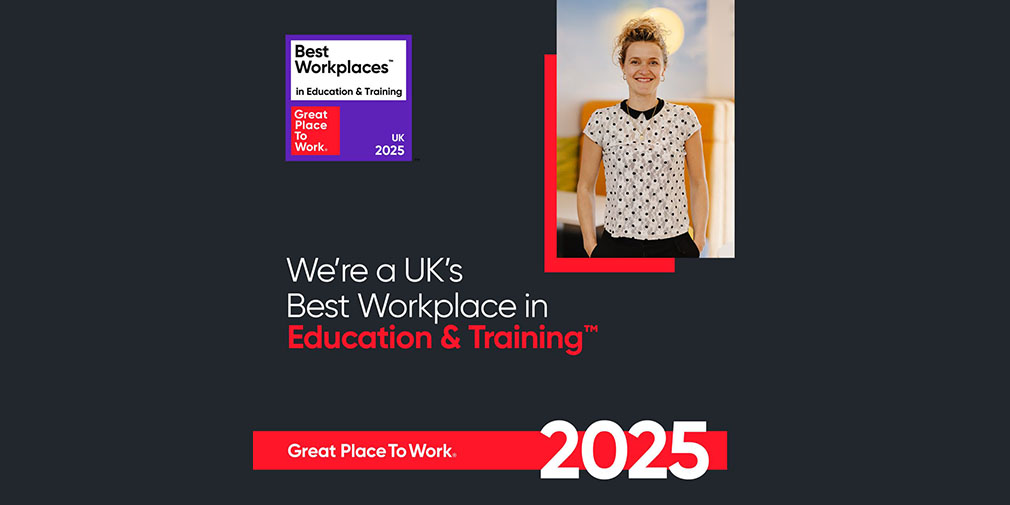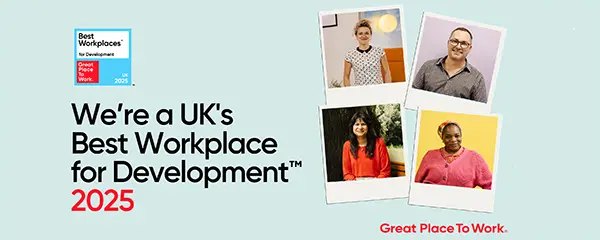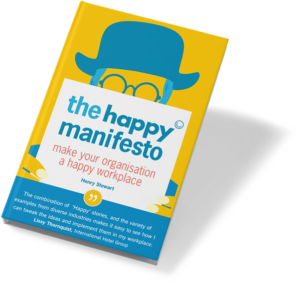Gallup recently found that the single largest impact on employee happiness and engagement comes from managers. But their study also revealed that companies pick the “wrong” manager 82% of the time. The result is demotivated employees led by managers who lack the skills to lead, inspire and motivate.
It has been estimated that one in two employees who quit their jobs do so because of a bad boss (Snyder, 2015). As the old adage goes, people join organisations but leave their manager. Indeed one CMI study found that 49% of UK staff would take a pay cut to be able to change their manager.
In the Happy Manifesto (2013), Henry Stewart presents a simple solution: “people should be chosen to manage people on the basis of how good they are at managing people” (p.110, 2013). Although this may seem obvious, Gallup’s study shows that it very rarely gets done in practice. Managers are mostly appointed because they are good at the core job, not because they are good with people. Henry has a solution to this, which is also recognized by the Gallup study: dual career paths (DCL’s).
Hay Group explains DCL’s: “the defining attribute of a dual career track is that, at some point in the path, the individual is presented with a choice” (2004, p.4). Employees get to choose between a managerial career, or one of expertise which does not involve people responsibilities. Although the concept of DCL’s has existed for decades, this practice has mostly been used by a handful of world-leading technology and science companies. What Henry instead proposes is to apply this across all types of firms. By offering two career paths, companies can ensure they keep valuable employees by letting them do what they love most. Wendy Hirsh (2005) points out what many firms forget – that ‘managing’ can be so much more than people management. Managers can have responsibility of extensive programmes or projects, and therefore the functional employees should be perfectly able to progress without the traditional responsibilities. She also points out that this type of management is growing in knowledge-based firms as these often have project structures.
Six examples of companies who pursue dual careers ladders:
1. Cougar. Happy Ltd was training engineers from software company Cougar in management skills. At the end of the day, several managers approached the facilitator and said “this isn’t really for us. We’re going to approach our MD and ask if we can stop being managers”. Clive Hutchinson, Cougar’s Managing Director, turned out to be open to this. The company created a second career path for those who wanted to remain engineers, based around the Judo belt system. Engineers would start as a light blue belt, move up through white and brown to the ultimate black belt. It has proved highly successful as an alternative career path.
2. Mastercard. Mastercard have special career paths for people who want to progress but not manage people. Employees can either progress as consultants (functional) or leaders (managerial). They have these paths in project management and sales and plan to implement them in product development, marketing and communications (see below). In 2013, Forbes named Mastercard one of the 50 Best Companies To Work For In 2013.
3. Kraft Foods Inc. At Kraft Foods Inc. in the U.S, they introduced DCL’s already in 1995. The implementations were hugely successful, and only four years later the company reported a decrease in employee turnover from 9% down to 6% (Cole-Gomolski, 1999).
4. 3M. One of the most tangible results of a dual career track system is the existence of the Post-it. Arthurt Fry at 3M was responsible for developing the best-selling product. According to Fry, the Post-it would not have existed today if 3M‘s dual career paths had not been in place. Fry admitted that one of the reasons behind his choice to remain in the field, and not pursue a managerial career, was because of the possibility of becoming one of their highly regarded “corporate scientists” (Tomasko, 1995).
5. BP is another company that has reported the success of their dual careers system. In fact, they even have a triple career system; functional specialists, functional leaders and business leaders. Thus, they differentiate between functional managers and general managers. They do however encourage moving between the categories.
6. Rolls-Royce. At Rolls-Royce, they pursue a similar approach to that of BP. There are three types of manager – Specialist roles (functional), Technical Manager (functional) and Project Manager (traditional). Rolls Royce have received praise for the internal structures and are consistently in the top 25 best companies to work for in the UK.




















